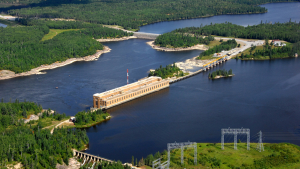Scott Gullacher has been temporarily barred from working as an engineer in Saskatchewan after a bridge he designed collapsed in 2018 and five other bridges he worked on were found to be inadequate.
The Association of Professional Engineers and Geoscientists of Saskatchewan (APEGS) issued the prohibition and found Gullacher guilty on three counts of professional misconduct by the association’s discipline committee.
Central to the prohibition was the Sept. 14, 2018 collapse of the Dyck Memorial Bridge in the Rural Municipality of Clayton, Sask. The bridge collapsed a few hours after it opened for public use because of settlement of the east pier, writes the panel in its decision and interim order.
The panel was headed by engineers Daniel Kishchuk, Daryl Andrew and Chanelle Joubert.
The Dyck Memorial Bridge’s collapse resulted in new weight restrictions and precautions in the province.
Regarding the memorial bridge, “Gullacher was found to have not practised in a careful and diligent manner by not employing a site-specific geotechnical analysis and by not providing adequate engineering designs for the helical pile foundations,” reads a release from APEGS.
The initial complaint by APEGS stated the lack of a geotechnical analysis caused the use of an inappropriate method to determine the factored resistance of the foundations.
As a result, there was an “overestimation of the helical pile capacity,” reads the written decision released in January.
“The helical pile designs did not provide the axial and bending capacity specifications required, clear descriptions of the pile geometry suitable to fabricate the piles and target torque requirements necessary to achieve the design axial capacity.”
The bridge’s piles were found to have a lower capacity than expected and had dropped roughly 1.2 metres below installation elevation at the time of testing. The piles were found to have a capacity based on derived torque values of 280 kN to 300 kN, as opposed to the expected 350 kN to 400 kN.
No one was injured in the bridge collapse.
Gullacher was also found to have improperly designed five municipal bridges resulting in them failing to meet the minimum load capacity requirements.
The issues found in Gullacher’s plans and designs for the five bridges were numerous.
Of the bridges, one was located each in the Rural Municipalities of Scott, Caledonia and Mervin while two were in the Rural Municipality of Purdue.
For all five bridges, Gullacher was found to have submitted inaccurate representations of the designs, according to the order.
Documents submitted were missing the composite/non-composite action of the superstructure, bolt grades and strength, weld sizes, locations and strength, back wall dimensions and failed to note that the guardrails did not conform to requirements.
The bridges also failed to conform with code requirements laid out in the Canadian Highway Bridge Design Code.
These failures included the absence of a design life span, no quality control or testing requirements submitted and the concrete deck panels, structural steel, plate and tension members materials all failing to meet code, among many other issues, the order reads.
The bridges were also missing critical welding details, had insufficient capacity due to a lack of composite action in superstructure members, insufficient superstructure continuity, used a non-compliant bridge-rail design, had insufficient details for gravel wearing and could not meet minimum loads due to “assumptions made regarding lateral load distribution and distribution of load across bands under resistance.”
Two other charges against Gullacher were found to have insufficient evidence to move forward.
Regarding an accusation that Gullacher was “offering services, advising, or undertaking professional assignments outside of his area of competency,” the panel said there was not enough evidence to understand Gullacher’s areas of competence or differentiate between the accepted definitions of engineering disciplines.
Another charge claimed Gullacher did not practise “in a careful or diligent manner” regarding the overall design of the Dyck Memorial Bridge. As Gullacher was not contracted for the overall design of the bridge but rather for replacing the timber superstructure with a new substructure, the charge did not hold.
Gullacher was present during the hearing and pleaded no contest.
“To safeguard the public, the hearing panel has ordered that the member not practise as a professional engineer until a final order is made,” reads the order.
The next stage of the hearing is scheduled to take place on March 13 at 10 a.m.
Regarding the findings against Gullacher, APEGS executive director Stormy Holmes said Gullacher’s work was a breach of public trust.
“I am confident that our regulatory processes worked as they should to protect the public,” Holmes said. “The public must feel confident and trust that the careful and diligent work of engineers and geoscientists will keep them safe.”







Recent Comments
comments for this post are closed